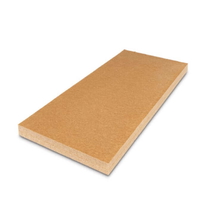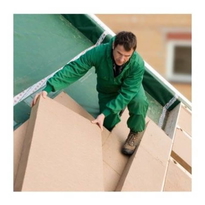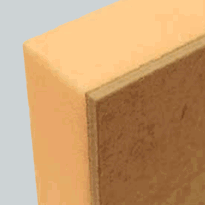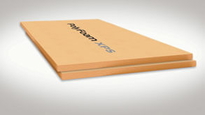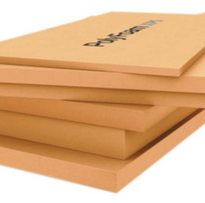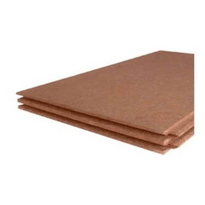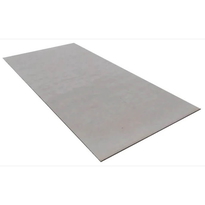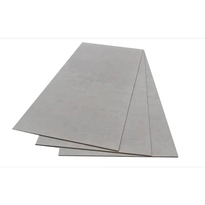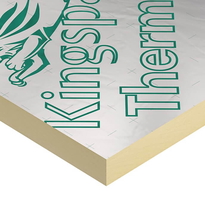Types of Roof Insulation Boards and Their Applications
Different types of roof insulation boards are selected based on their specific thermal performance, structural properties, moisture resistance, and application requirements.
Polyisocyanurate (Polyiso) boards offer the highest thermal resistance among rigid foam options, with K-values as low as 0.022 W/m²K, making them ideal for energy-efficient insulation in commercial and residential flat roofs, especially in warmer climates. Polyiso's high R-value per inch makes it a popular choice for roof insulation, especially where space is limited.
Extruded Polystyrene (XPS) boards, with K-values around 0.030 W/m²K, provide excellent moisture resistance and are commonly used in protected membrane roofing and inverted roof assemblies. However, they can add additional weight to the roof structure.
Expanded Polystyrene (EPS) boards, with K-values approximately 0.038 W/m²K, are lightweight and easy to install, but they tend to be less durable over time, making them suitable where cost-effectiveness is a primary consideration.
These insulation boards are chosen based on local climate conditions, structural requirements, and moisture management needs to optimise roof performance and energy efficiency in UK buildings.
Materials and Environmental Considerations in Choosing Insulation Boards
Materials and Environmental Considerations in Choosing Insulation Boards
Selecting the appropriate roof insulation board requires careful consideration not only of its thermal performance but also of its material composition and environmental impact throughout its lifespan — from production and use to disposal. Material selection impacts the overall environmental footprint of insulation systems, influencing sustainability goals. Polyisocyanurate (Polyiso) foam boards offer high thermal resistance, often exceeding 6.8 W/m·K per finished inch, but their production may involve chemical blowing agents with potential effects on global warming. Extruded polystyrene (XPS) provides excellent water resistance and durability, making it suitable for various roofing applications; however, it can be flammable and its manufacturing process impacts the environment due to utilisation of certain blowing agents and chemicals. Expanded polystyrene (EPS) is a cost-effective option with a petroleum-based origin, which raises considerations regarding fossil fuel consumption and environmental sustainability. Perlite cover boards are known for their eco-friendly nature, often being recycled and lightweight, while offering moderate insulation properties — making them a sustainable choice. Gypsum boards are natural and fully recyclable, contributing positively to environmental management; however, their insulation capacity is limited compared to specialised foam boards. Ultimately, selecting the most suitable materials involves a balanced assessment of thermal efficiency, environmental footprint, moisture resistance, safety attributes, and sustainability.
Installation Tips and Benefits of Using Roof Insulation Boards
Proper installation of roof insulation boards is essential to achieve optimal thermal performance, long-lasting durability, and safety of the roofing system. Correct installation practices include staggering joints by at least 150 to 300 millimetres, ensuring support edges run parallel to the steel deck ribs, and strictly following the manufacturer’s specifications for fasteners and adhesives. These measures help to minimise thermal bridging, prevent sagging, and enhance overall stability.
Additionally, preparing the substrate thoroughly and covering the insulation on the same day as installation helps to prevent moisture infiltration and potential damage. This approach ensures the integrity of the insulation and maintains the energy efficiency of the roof exists over time.
| Step | Key Considerations |
|---|---|
| Staggered joints | Reduce thermal bridging, increase board stability |
| Fastener placement | Maintain at least 150 millimetres from edges |
| Support alignment | Ensure boards are parallel to steel deck ribs |
| Substrate preparation | Clean and dry surface for improved adhesion |
| Cover immediately | Protect from weather exposure and prevent damage |
Adhering to these installation tips ensures a more effective, reliable, and long-lasting roofing system suited to UK conditions.
Conclusion
Selecting the appropriate roof insulation board requires careful consideration of material properties, environmental impact, and installation procedures. Making the right choice enhances thermal efficiency, reduces energy costs, and contributes to the overall durability of the building. Proper installation ensures these benefits are maximised while minimising issues such as air leakage and moisture ingress. Professionals should assess project-specific factors, including the climate and the structure of the building, to determine the most effective insulation solution. Accurate selection and meticulous installation of roof insulation boards are essential for achieving long-term performance and energy savings.
